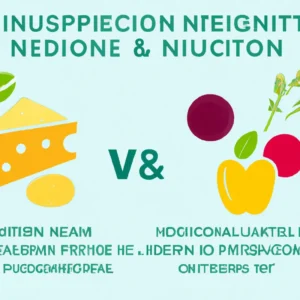**”The Role of Lab-Grown Meat in Reducing Food Waste: How Cultivating Alternative Proteins Can Minimize Environmental Impact and Promote Sustainability”**
The Role of Lab-Grown Meat in Reducing Food Waste
Lab-grown meat, or cultured meat, provides a solution to the global food crisis. It tackles environmental impact and food waste. As populations grow and resources dwindle, lab-grown meat offers a sustainable alternative. This post explores how alternative proteins can reduce environmental impact and food waste.
Understanding Food Waste
Food waste remains a major global issue. One-third of all food produced for consumption—around 1.3 billion tons—ends in landfills annually. This waste increases greenhouse gas emissions, as decomposing food produces methane. The resources used to produce wasted food—water, land, and energy—also go to waste. As populations grow and food demand increases, we must reduce food waste to protect our planet and ensure food security.
The Impact of Traditional Meat Production
Traditional meat production significantly contributes to food waste. Farmers often raise more livestock than necessary to meet market demand, creating surplus meat. This excess meat often spoils before reaching consumers, especially in areas with limited cold storage. Conventional farming practices also generate waste through feed and water usage. Livestock farming produces byproducts that farmers discard instead of utilizing. This cycle worsens food waste and environmental degradation, making alternatives crucial.
Lab-Grown Meat: A Solution to Food Waste
Lab-grown meat can reduce food waste by allowing precise production based on demand. Producers cultivate only what consumers need, minimizing surplus meat in landfills. This efficiency matters in a world facing food shortages and the need to optimize resource use. Lab-grown meat production also requires fewer resources than traditional methods, minimizing waste throughout the supply chain.
Cultivating Sustainable Proteins
Lab-grown meat production uses cellular agriculture techniques. These techniques cultivate animal cells in a controlled environment. Producers create beef, chicken, or pork without raising entire animals, reducing land use and environmental strain. By growing meat from cells, we produce high-quality protein without extensive resources.
Resource Efficiency in Production
Lab-grown meat offers significant resource efficiency. Studies show it takes about 90% less water to produce lab-grown beef compared to conventional methods. Additionally, it uses up to 99% less land, easing pressure on natural ecosystems. This reduction in resource consumption lowers production costs and mitigates the environmental impact of food production.
Reducing Carbon Footprint
Conventional meat production generates considerable greenhouse gases, contributing about 14.5% of total global emissions.
Conclusion
Lab-grown meat presents a promising solution to food waste and environmental issues. It offers sustainable practices, resource efficiency, and reduced carbon footprints.
Below are related products to the topic if you’re interested:
FAQ
What is lab-grown meat and how does it help reduce food waste?
Lab-grown meat, also known as cultured meat, is produced using cellular agriculture techniques that cultivate animal cells in a controlled environment. This method allows for precise production based on consumer demand, significantly reducing the surplus meat that often ends up in landfills. By minimizing overproduction, lab-grown meat addresses food waste while providing a sustainable protein source.
How does traditional meat production contribute to food waste?
Traditional meat production contributes to food waste through the overproduction of livestock to meet market demands, leading to surplus meat that can spoil before reaching consumers. Additionally, conventional farming practices generate waste from feed, water usage, and the disposal of livestock byproducts, further exacerbating the issue of food waste and environmental degradation.
What resources does lab-grown meat save compared to conventional meat production?
Lab-grown meat is significantly more resource-efficient than conventional meat production. It requires about 90% less water and up to 99% less land. This reduction in resource consumption not only lowers production costs but also mitigates the environmental impact associated with food production, making it a sustainable alternative in the face of growing food demands.















Post Comment